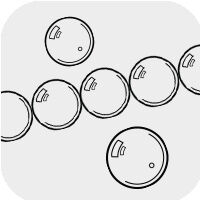Cuprite
Meaning and Properties
Cuprite History
Cuprite, also called red copper ore, is a soft, heavy, red oxide mineral that is a major ore of copper and is still mined in many places around the world. It was given its name from the Latin cuprum for its copper content by William Karl Ritter von Haidinger in 1845. Previously, it had been known by several names. Cuprite comes from the oxidized zone of copper lodes and takes the form of crystals, grains, or earthy masses. Its crystals are transparent to translucent and red to a deep red that can appear almost black. For jewelry, cuprite is mostly used as cabochons and beads.
Cuprite Metaphysical Properties
In the metaphysical realm, cuprite, the stone of "survival" is believed to help satisfy one's physical needs while diminishing worries. Cuprite is said to stimulate the base chakra. It is thought to promote grounding of the total body as well as increasing vitality and energy, it also helps deal with vertigo and altitude sickness. Cuprite vibrates to the number 2 and its astrological signs are Virgo, Capricorn and Taurus.
Cuprite Geological Properties
Cuprite is formed most often during the interaction of groundwater and copper minerals or from the weathering of copper deposits. Cuprite crystals are octahedral or cubic, rarely dodecahedral, sometimes highly modified. Cuprite has metallic luster and very high refractive index. Most cuprite crystals are too small to create faceted gemstones although large gem-quality crystals have been found in Africa. Faceted cuprite, no matter how large or small, is prized for its appearance--deep garnet coloring and higher brilliance than a diamond--thus making it a most collectible gem. Only the gem's soft nature prevents it from being among the most valuable jewelry stones. Cuprite is primarily found in the Ural Mountains of Russia, the Altain Mountains in Mongolia and the island of Sardinia with other deposits found in Bolivia, Chile, England, France, Zaire and the United States.
|
|
|
|
|
|
|
|
|
|
|
|
|
|
|
|
|
|
Proper Care of Cuprite
Cuprite is a soft stone with a low Mohs hardness and its surface can be easily damaged. Cuprite jewelry components can be safely cleaned with lukewarm water and a mild soap. Wipe the surface with a soft cloth. Avoid chemicals such as household bleach and do not use it in ultrasonic cleaners.
Designing with Cuprite
According to Itten's Color Theory, the red of cuprite has analogous colors of brown, purple and orange. Because they are near each other on the color wheel they can easily be paired with each other. A complementary color to red (on the other side of the color wheel) is green (e.g. emerald), which provides a satisfying high contrast. Yellow-green (e.g. periodot) and blue-green (e.g. aquamarine) are split complementary colors to red which means they provide lots of design opportunities.
View more resources featuring cuprite, including Design Ideas, Videos, Tutorials and more!
Shop for Cuprite
**Please note that all metaphysical or healing properties listed are collected from various sources. This information is offered as a service and not meant to treat medical conditions. Fire Mountain Gems and Beads® does not guarantee the validity of any of these statements.
How did you like this resource? Your feedback helps us provide resources that matter to you most.
Copyright Permissions
All works of authorship (articles, videos, tutorials and other creative works) are from the Fire Mountain Gems and Beads® Collection, and permission to copy is granted for non-commercial educational purposes only. All other reproduction requires written permission. For more information, please email copyrightpermission@firemtn.com.

